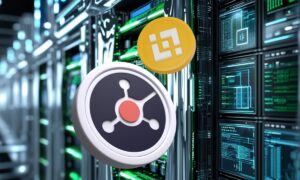Decentralized finance or DeFi continues to garner mainstream adoption. Described as an attempt by developers to recreate traditional financial instruments without using intermediaries like banks and lawyers but smart contracts, open finance has been a major success.
DeFi as an Umbrella
By Nov 16, there were over $13.6 billion of assets under management in different DeFi dApps. Most of them were held in Maker and Uniswap.
Uniswap is one of the leading decentralized exchanges facilitating trustless swapping of Ethereum-based tokens. According to BTC Peers, Coinbase invested 1.1 million in USDC stablecoin in Uniswap and PoolTogether in early April 2020.
DeFi is an umbrella, describing decentralized financial apps covering trading, lending, insurance, and other core sectors of traditional finance.
However, amid the popularity, one area of DeFi that has taken off considerably is token swapping.
Several protocols, mostly in Ethereum, use the Automated Money Market (AMM) model with incentives either through the distribution of deflationary governance tokens, a share of trading fees, or both.
Popular Ethereum-based AMM protocols encourage liquidity provision through governance token distribution and a share of trading fees. Because of their fixed supply and deflationary nature, investors now prefer to participate in DeFi.
Besides the ability to eliminate risks related to the non-custodial nature and centralized nature of alternative solutions in the mainstream, that participants earn extra rewards explains the sharp growth of DeFi and value locked in these protocols.
The OnigiriSwap Protocol
OnigiriSwap is an Ethereum-based DeFi protocol where traders can trustlessly swap tokens without relinquishing control to a middle man. Their anonymous developers are at an undisclosed location in Japan.
Operated by a set of automated and decentralized smart contracts, OnigiriSwap’s tokenomics and AMM–first based on Uniswap and later c.Vault Finance (CORE), are time-tested. CORE is a high yielding farmable and deflationary token with a market cap of $37,622,497 according to Coingecko.
Holders of ONIGIRI possess governance rights and a portion of fees paid by traders. The token will be rewarded for staking Uniswap and Sushiswap liquidity provider (LP) tokens. Later, coin holders who provide liquidity to the Onigiri DEX–once they migrate to Polkadot, will also receive ONIGIRI.
The governance token has a fixed supply and is deflationary. A fixed amount of ONIGIRI will be generated and distributed to stakers before the protocol starts rewarding stakers with a portion of fees received from swapping.
ONIGIRI Minting and Distribution
Earlier on, beginning from block height 10,990,000, 80 ONIGIRI tokens were minted and distributed to stakers of all supported pools in the first 200,000 blocks.
For the project’s sustainability, six percent of ONIGIRI tokens minted in the first 300,000 blocks were diverted to a developer fund. To prevent dumping, these coins will be locked for two weeks.
The number of ONIGIRI tokens minted and distributed after the first 200,000 blocks fell to 20, halving every 100,000 blocks until 1.2 million blocks have been mined. At this point, the community will decide whether to stop or continue the minting and distribution of ONIGIRI for stakers.
However, new protocol changes after the adoption of c.Vault Finance changed how ONIGIRI tokens are earned. Under OnigiriSwap V2, ONIGIRIv2 tokens are earned from swapping fees at different OnigiriSwap pools. Everything else remained the same.
Supported AMM Pools
There are five asset pools LP holders can chose to stake in: USDC/ETH, USDC/ONIGIRI, WBTC/ETH, DAI/ONIGIRI, DAI/ETH, YFI/ONIGIRI, UNI/ONIGIRI, and ETH/ONIGIRI cutting across liquidity mining, mining aggregation, and stablecoins.
As a decentralized protocol, at later stages more pairs including LINK/ONIGIRI, SUSHI/ONIGIRI, and USDT/ONIGIRI may be added. Already, the Onigiri governance is online and token holders can propose changes to the protocol.
Once the Onigiri DEX is live, trading fee will be set at 0.3 percent. Out of this, 0.25 percent of fees payable in ONIGIRI will be distributed to liquidity providers. 0.02 percent of the trading fees will be distributed back to ONIGIRI token holders and stakers. The remaining 0.03 percent will be burnt, decreasing the total supply of ONIGIRI tokens.
The Transition
The project is currently under transition—waiting for new patrons. Meanwhile, they are doubling down on research and development. The protocol’s creator said they are taking a methodical approach to ensure it remains secure and robust; possibly replicating their previous success.
At their height, the ONIGIRI price rose to $2.89 with average trading volumes of over $2.6 million. At the time of writing, the token is trading at $0.003 presenting an opportunity for traders who seek value. The OnigiriSwap team may be back to the drawing board but as long as investors flow to DeFi, majority of which are in Ethereum, the protocol may benefit from the capital influx.
Once the Onigiri DEX is launched from the interoperable Polkadot blockchain, users will freely lock tokens and move value through bridges to the DEX, exchanging tokens with others thereby diversifying income streams through compatible rails.
Once this is achieved, the ONIGIRIv2 token may be listed in several exchanges and aggregators. This would provide further impetus for bulls to drive prices higher, even retesting October 2020 highs.



































